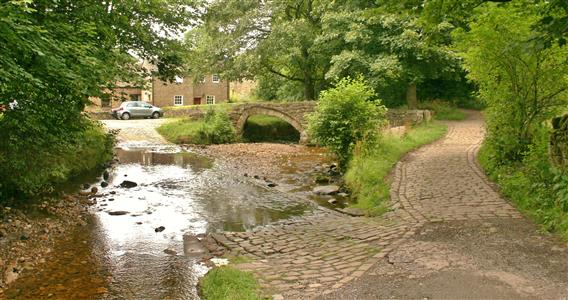
Wycoller near Colne
Lancashire emerged as a major commercial and industrial region during the Industrial Revolution. Liverpool and Manchester grew into its largest cities,
with economies built around the docks and the cotton mills respectively. These cities dominated global trade and the birth of modern industrial capitalism.
The county contained several mill towns and the collieries of the Lancashire Coalfield. By the 1830s,
approximately 85% of all cotton manufactured worldwide was processed in Lancashire. Accrington, Blackburn, Bolton, Burnley, Bury, Chorley, Colne, Darwen,
Manchester, Nelson, Oldham, Preston, Rochdale and Wigan were major cotton mill towns during this time.
Blackpool was a centre for tourism for the inhabitants of Lancashire's mill towns, particularly during wakes week.
The historic county was subject to a significant boundary reform in 1974 which created the current ceremonial county and removed Liverpool and Manchester,
and most of their surrounding conurbations to form the metropolitan and ceremonial counties of Merseyside and Greater Manchester.
The detached northern part of Lancashire in the Lake District, including the Furness Peninsula and Cartmel, was merged with Cumberland and Westmorland to form Cumbria.
Lancashire lost 709 square miles of land to other counties, about two fifths of its original area, although it did gain some land from the West Riding of Yorkshire.
From WikiPedia